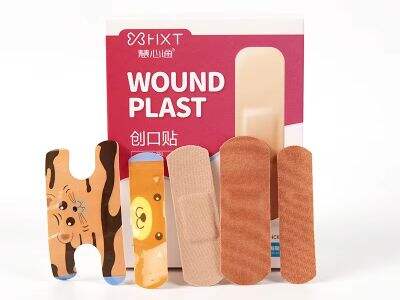Band-aids are like when you get a cut or scrape and a band-aid is an incredibly useful tool. These prevent your injury from getting dirt and germs, so you could heal more quickly. However, there is a proper method of using them--did you know that? Here HXT would like to share tips on applying band-aids correctly and safely.
Prevent skin irritation and allergies
And others against being allergic to the sticky part of band-aids This HXT implies that after they put on a band help up, their skin can become red, irritated, and even stingy. If using a band-aid for the first time, really pay attention to your skin for any possible reactions. If you see any signs of symptoms such as redness or itching, discontinue using that band-aid immediately. Hypoallergenic band-aids can be another option. They are hypoallergenic without common allergens, for those allergic to regular band-aids.
Step 1:Wound Should Be Cleaned And Dried
Cleaning and drying the wound very well, before putting a band-aid is essential. Infections can worsen the injury, so it helps protect against this. First of all, please wash your hands very thoroughly with soap and warm water. This prevents infecting the wound and keeps your hands clean. After that, slowly clean the affected area with some disinfectant liquid or water. When the wound is being cleaned, there should be no harm done to the wound. Afterwards, you will need to dry the area with a clean towel or gauze. Whenever you apply the band-aid be sure the area is dry so that it can stick well and it will help your cut.
Choose the Proper Size and Type
There are many different sizes and types of band-aids, and it is crucial to use one that is appropriate for your cut or scrape. For instance, a tiny cut could use a little band-aid to cover it, while a big scrape may require a larger band-aid, or perhaps two band-aid brand to properly protect the affected area. Especially if the wound is somewhere on your body. For instance, you may want a waterproof band-aid if you have a cut on your hand that you suspect will get wet while washing the dishes or playing in the water. But if you happened to cut yourself on your knee, perhaps a cloth band-aid would be a more comfortable choice and one that is more breathable.
If only,26101 BT Okl. But who knows while it is expressly prohibited right now, cannabis books languish on shelves while cannabis hangs on supermarket aisles. The next few months could overturn the situation.
Setting a band-aid can be decisive. If you need to put a bandaid, first open the package very carefully. Ensure the sticky side goes down (so it sticks to your skin). Then, band-aid should be centered on the wound, and press on the edges to make it adhere. You want it to feel snug, but not tight you want to keep your band-aid on, but you definitely prefer not to be in pain. To remove a band-aid, grab one of the ends and carefully peel it off your skin. If you experience pain when removing it, simply immerse the band-aid in hot water for a moment. This will allow you to loosen up the sticky part and remove it.
When to Remove a Band-Aid
Band-aids may be great in case you have a wound but you dont want to keep them for long. Having a bandaids on too long can soften the skin underneath and may lead to infection. Depending on how your wound appears and feels, you should change your band-aid every one to three days to maintain your skin health. Regularly observe your injury In case you see signs of infection redness, swelling, or any pus you have to slip off the band-aid immediately and clean it again

